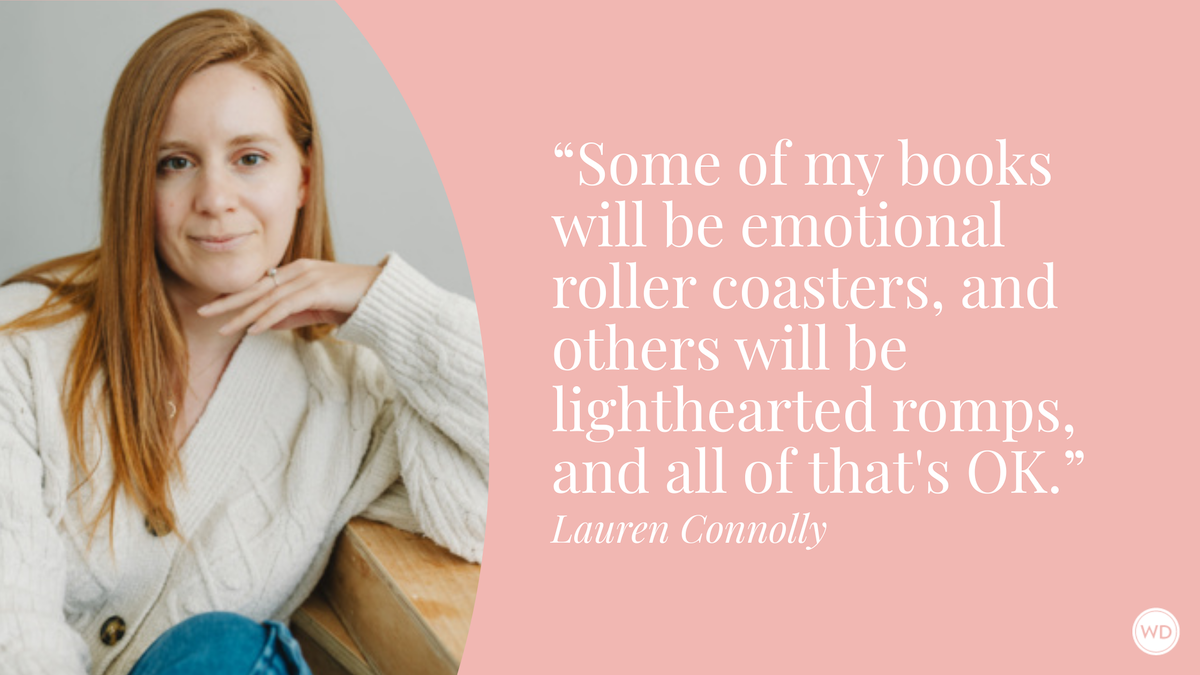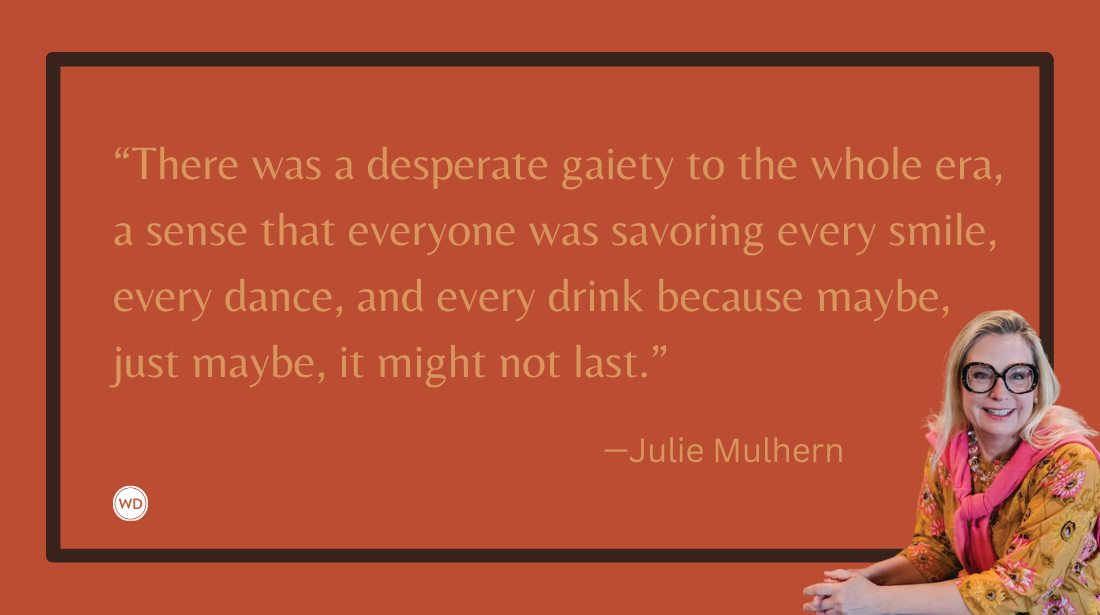How to Nail an Opening Scene: Check your TV!
Award-winning journalist and novelist Barbara Josselsohn shares how the pilot episode of Gilmore Girls helped her unlock how to nail an opening scene in fiction.
As a novelist and writing coach, I know how hard it can be to get an opening scene just right. Giving too much information or not enough, filling in the correct amount of backstory to leave readers curious but not confused… what a juggling act! No wonder it’s tempting to walk away from the computer in frustration and find another activity to occupy your time. I know!
But recently I came across one of the best lessons I’ve ever seen for crafting an opening to a novel. And ironically, I found it while I was procrastinating with my own writing!
That’s right—I was channel surfing on my sofa when I landed on the pilot for the popular early-2000s TV series Gilmore Girls. And soon exactly knew what I needed to do to make my Chapter One sing.
In a nutshell, the pilot episode of Gilmore Girls opens on a fall morning when 30-something Lorelai Gilmore walks into the local diner to get coffee. She engages in some casual banter with the owner, Luke, whom she clearly knows well; fends off the overtures of a sleazy but harmless patron sitting nearby; banters with Luke again; and then snaps into action when that same sleazy patron tries to hit on her dining companion—who just happens to be her 16-year-old daughter.
I’d never watched the series before, but suddenly, thanks to this three-minutes-and-change opener, I was hooked. This scene had given me all the information I needed to connect with the show’s characters, become engaged and intrigued, and decide I wanted to watch more.
How did it do that? By concisely serving up:
- Time and Place. As Lorelei heads into Luke’s, the camera pans across a bustling village center, complete with a kid on a skateboard and a couple walking their dogs. The song “There She Goes,” by The La’s, plays as the cameras hovers for a moment in front of a sign that reads “Stars Hollow, Founded in 1779.” In seconds—thanks to the music, the fashions, and the setting, we know exactly where we are: Small-town New England circa 2000. I immediately felt grounded in a time and place that felt very appealing to me.
- Principal Characters and Relationships. Lorelai is smart, quirky, funny, and addicted to coffee, while Luke is gruff, sarcastic, but nevertheless kind of charming. (And because the camera pauses for a second to show us that the diner is named “Luke’s,” we know he’s the owner and is likely well-established in the community.) There’s some tantalizing attraction and sexual energy between the two, which is fun to watch. But Lorelai’s first priority is clearly her daughter, Rory, who commands her attention as the scene continues.
- Tone/Mood. Yes, there’s a creepy fellow who tries to pick up both mother and daughter—but this is a diner, the action takes place in daylight, and witty Lorelai instantly makes mincemeat of the guy. We can tell right away that this series is a rom-com, maybe with some more serious elements thrown in. So if I were the kind of person looking for danger, graphic scenes, or edgy content, I’d know to keep flipping the channels.
- Inciting Incident and a Hint at the Future. It’s a short scene, but the inciting incident seems to come when the sleazy patron sets his sights on Rory and Lorelai springs into action to protect her daughter. It’s clear that this will be the simmering—and sometimes boiling—tension in Lorelai’s life and through the course of the series: her wants as a young, evidently single woman and her responsibility as the mother of a teenage girl.
Check out Barbara Josselsohn's The Lost Gift to the Italian Island here:
(WD uses affiliate links)
In this way, Gilmore Girls tells its audience exactly what it needs to know and prepares them for what the enduring themes and relationships will be, even as plots twist and turn, and secondary characters enter and leave the series. We get such a clear idea of what to expect in terms of the narrative mood. This is a safe and relatively clean fictional world for sure, but with thoughtful, meaningful situations.
Of course, you can do this analysis with the opening of any series you like. For example, think of the opening of a very different type of show, the popular HBO series Succession, which just ended its run last spring. It starts with a raw nighttime depiction of a confused and apparently ill elderly man, then switches to a chauffeured car driving though New York City in daylight, inside of which is a well-dressed man clearly pumping himself up for something big, as “An Open Letter to NYC,” by the Beastie Boys, plays. Again, we have time and place; key characters; a strong mood—gritty, and intense; and an inciting incident—the potential health crisis of the elderly man, who turns out to be the family patriarch. This setup skillfully introduces an ongoing story of power, greed, and family dynamics.
Of course, this isn’t to say that everything you see on screen is immediately transferrable to the written page. No, you can’t show a sign that says “Stars Hollow” or play background music in a novel. But both mainstream novels and television series are formats that require essential information to be delivered clearly, interestingly, and quickly from the very moment the story begins. And a look at a favorite series opener can be a great way to help you diagnose what’s going right—or wrong—in your own early pages.
So if you’re struggling with your opening, go ahead and watch the beginning of a TV series or two. Hopefully it will turn out to be not a means of procrastination, but a path back to the story you want to write.
Barbara Josselsohn is an award-winning journalist and novelist who loves crafting stories about strong protagonists facing a fork in the road. She is the author of five previous novels including The Lilac House, The Bluebell Girls, The Lily Garden, The Cranberry Inn, and The Last Dreamer. She has also written hundreds of articles and essays in major and regional publications about family, home, and relationships. She lives just north of New York City and enjoys escaping to the beach or the mountains whenever she can. Other than writing, her biggest passion is her family: her husband, her three kids, and her rescue pup, a mini-schnauzer named Albie. She is currently at work on book 2 of her Sisters of War series, a follow-up to Secrets of the Italian Island.









